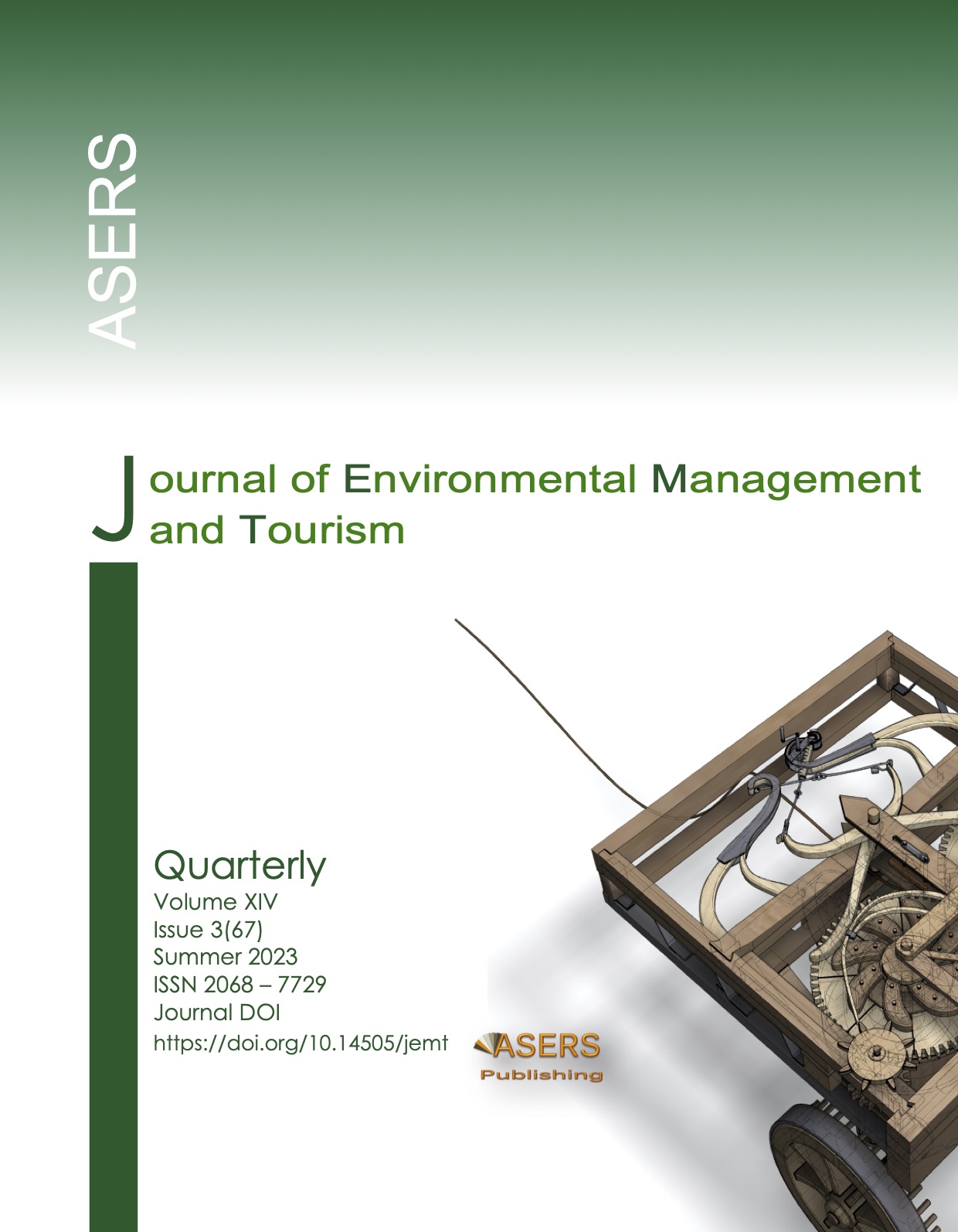Social Investing as Tool to Improve the Quality of Life. Implications for the Sustainable Development and Environmental Vulnerability
Abstract
In recent years, social investment has become a tool for solving economic problems, improving the level and quality of life of the population, increasing life expectancy, leading to conditions for creating new environmentally friendly jobs, expanding the availability of social services, medicine and education, as well as a mechanism for redistributing temporarily free funds between business entities. Active implementation of the social investment mechanism based on the experience of developed countries in the direction of the efficient use of financial resources will lead to the growth of sustainable socio-economic development of Kazakhstan. In the course of the analysis, the authors found that a decrease in the population's monetary income, that is, the level of well-being, a characteristic increase in consumer spending, a decrease in purchasing power, as well as a propensity to save money, require the speedy introduction of social investment mechanisms in order to improve the quality of life of the population of the regions of Kazakhstan to prevent possible social threats. Social investment for the sustainable development of the economy involves the effective interaction of subjects in the process of providing financial resources in order to solve social problems and obtain material benefits for investors.
References
[2] Aimurzina, B., et al. 2019. Major sources of financing investment projects. Entrepreneurship and Sustainability Issues, 7(2): 1555–1566. DOI: http://doi.org/10.9770/jesi.2019.7.2(53)
[3] Battamo, A. Y., et al. 2021. Mapping socio-ecological resilience along the seven economic corridors of the Belt and Road Initiative. Journal of Cleaner Production, 309: 127341. DOI:https://doi.org/10.1016/j.jclepro.2021.127341
[4] Becchetti, L., Cordella, M., and Morone, P. 2022. Measuring investments progress in ecological transition: The Green Investment Financial Tool (GIFT) approach. Journal of Cleaner Production, 357: 131915. DOI:https://doi.org/10.1016/j.jclepro.2022.131915
[5] Boulton, T. G. 2022. Social progress, business formation, and access to investment capital. Emerging Markets Review, 50: 100831. DOI: https://doi.org/10.1016/j.ememar.2021.100831
[6] Chen, C. 2020. Performance evaluation of sustainable quality of life of eco-communities with data envelopment analysis. Journal of Environmental Protection and Ecology, 21(4): 1501–1509
[7] Deng, Q. S., Alvarado, R., and Cuesta, L. 2022. Asymmetric impacts of foreign direct investment inflows, financial development, and social globalization on environmental pollution. Economic Analysis and Policy, 76: 236-251. DOI: https://doi.org/10.1016/j.eap.2022.08.008
[8] Dmuchowski, P., Dmuchowski, W., Baczewska-Dąbrowska, A. H., and Gworek, B. 2023. Environmental, social, and governance (ESG) model; impacts and sustainable investment – Global trends and Poland's perspective. Journal of Environmental Management, 329: 117023. DOI:https://doi.org/10.1016/j.jenvman.2022.117023
[9] Harvie, D., Lightfoot, G., Lilley, S., and Weir, K. 2021. Social investment innovation and the ‘social turn’ of neoliberal finance. Critical Perspectives on Accounting, 79: 102248. DOI:https://doi.org/10.1016/j.cpa.2020.102248
[10] Hong, W. 2023. Evaluating the role of renewable energy investment resources and green finance on the economic performance: Evidence from OECD economies. Resources Policy, 80: 103149. DOI:https://doi.org/10.1016/j.resourpol.2022.103149
[11] Huang, C-J., Ke, W-C., Chiang, R. P-Y., and Jhong, Y-C. 2023. Which of environmental, social, and governance pillars can improve merger and acquisition performance? Journal of Cleaner Production, 398: 136475. DOI: https://doi.org/10.1016/j.jclepro.2023.136475
[12] Jie, H., et al. 2023. Sustainable energy policy, socio-economic development, and ecological footprint: The economic significance of natural resources, population growth, and industrial development. Utilities Policy, 81: 101490. DOI: https://doi.org/10.1016/j.jup.2023.101490
[13] Kevin, D. M. 2018. The impact of sustainable investment strategies. The Journal of Investing Summer, 25(2): 96-102. DOI: https://doi.org/10.3905/joi.2016.25.2.096
[14] Lapanan, N. 2018. The investment behavior of socially responsible individual investors. The Quarterly Review of Economics and Finance, 70: 214-226. DOI: https://doi.org/10.1016/j.qref.2018.05.014
[15] Lyneis, J., and Sterman, J. 2018. How to save a leaky ship: capability traps and the failure of win-win investments in sustainability and social responsibility. Academy of Management Discoveries, 2: 6-15. DOI:https://doi.org/10.5465/amd.2015.0006
[16] Nurgaliyeva, A. M. 2022. Opportunities for using green bonds to finance environmental projects in developing countries: Experience of the Republic of Kazakhstan. Journal of Environmental Management and Tourism, Volume XIII, 7(63): 1918 – 1926. DOI: https://doi.org/10.14505/jemt.v13.7(63).12
[17] Panzarella, F., Turcanu, C., Abelshausen, B., and Cappuyns, V. 2023. Community capitals and (social) sustainability: Use and misuse of asset-based approaches in environmental management. Journal of Environmental Management, 329: 117122. DOI: https://doi.org/10.1016/j.jenvman.2022.117122
[18] Sharma, G. D., Tiwari, A. K., Talan, G., and Jain, M. 2021. Revisiting the sustainable versus conventional investment dilemma in COVID-19 times. Energy Policy, 156: 112467. DOI:https://doi.org/10.1016/j.enpol.2021.112467
[19] Tolstykh, T., et al. 2022. Megapolis as a symbiosis of socio-economic ecosystems: The role of collaboration. Journal of Open Innovation: Technology, Market, and Complexity, 8(3): 2-29. DOI:https://doi.org/10.3390/joitmc8030126
[20] *** Official resource of Statistics Committee of the Ministry of National Economy of the Republic of Kazakhstan. www.stat.gov.kz
Copyright© 2025 The Author(s). Published by ASERS Publishing 2025. This is an open access article distributed under the terms of CC-BY 4.0 license.
